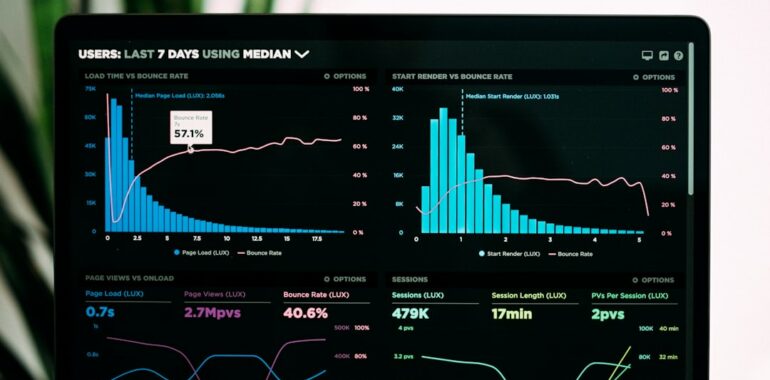Essential Key Performance Metrics for Driving Early-Stage Startup Success

Explore the crucial KPIs for early-stage startups and gain practical insights to measure and drive your business’s success effectively.
Introduction
Launching a startup is an exhilarating journey filled with opportunities and challenges. For early-stage startups, understanding and tracking the right Key Performance Indicators (KPIs) is essential to navigate this path successfully. Startup KPI metrics provide valuable insights into various aspects of your business, enabling informed decision-making and strategic planning. In this blog post, we’ll delve into the most important KPIs that can drive your startup’s success and offer practical tips on how to effectively measure and utilize them.
The Importance of KPIs for Startups
KPIs are quantifiable measures that reflect the critical success factors of a business. For startups, KPIs serve as a roadmap, highlighting areas that need attention and validating strategies that work. By consistently monitoring these metrics, entrepreneurs can ensure they are on the right track, make data-driven decisions, and pivot when necessary to achieve sustainable growth.
Top Startup KPI Metrics
1. Customer Acquisition Cost (CAC)
Customer Acquisition Cost (CAC) is the total expense incurred to acquire a new customer. This metric includes marketing expenses, sales team costs, and any other related expenditures. Keeping CAC low relative to the revenue generated per customer is crucial for maintaining profitability.
- Formula:
[
\text{CAC} = \frac{\text{Total Sales and Marketing Expenses}}{\text{Number of New Customers Acquired}}
]
2. Revenue Growth Rate
The Revenue Growth Rate measures the increase in your startup’s revenue over a specific period. It indicates how quickly your business is expanding and gaining traction in the market.
- Formula:
[
\text{Revenue Growth Rate} = \left( \frac{\text{Current Period Revenue} – \text{Previous Period Revenue}}{\text{Previous Period Revenue}} \right) \times 100
]
3. Churn Rate
Churn Rate reflects the percentage of customers who stop using your product or service within a given timeframe. A high churn rate can signal issues with customer satisfaction or product-market fit.
- Formula:
[
\text{Churn Rate} = \left( \frac{\text{Number of Customers Lost During Period}}{\text{Total Customers at Start of Period}} \right) \times 100
]
4. Lifetime Value (LTV)
Lifetime Value (LTV) estimates the total revenue a business can expect from a single customer account throughout its relationship. Comparing LTV with CAC helps determine the long-term viability of your customer acquisition strategies.
- Formula:
[
\text{LTV} = \text{Average Purchase Value} \times \text{Average Purchase Frequency} \times \text{Customer Lifespan}
]
5. Burn Rate
Burn Rate is the rate at which a startup is spending its capital before generating positive cash flow. Understanding your burn rate is vital for managing finances and ensuring longevity.
- Formula:
[
\text{Burn Rate} = \frac{\text{Monthly Operating Expenses}}{\text{Cash on Hand}}
]
6. Monthly Recurring Revenue (MRR)
Monthly Recurring Revenue (MRR) tracks the predictable revenue a business can expect every month. This metric is especially important for subscription-based models, providing a clear picture of financial health.
- Formula:
[
\text{MRR} = \text{Number of Subscribers} \times \text{Average Revenue per User (ARPU)}
]
How to Implement KPI Tracking
Effectively tracking KPIs involves several key steps:
Define Relevant KPIs
Identify which KPIs align with your startup’s goals and objectives. Focus on metrics that provide actionable insights rather than tracking every possible data point.
Set Clear Targets
Establish achievable targets for each KPI. These targets serve as benchmarks to measure progress and performance over time.
Use the Right Tools
Leverage analytics and tracking tools to collect and analyze data efficiently. Tools like Google Analytics, CRM systems, and specialized KPI dashboards can streamline the monitoring process.
Regularly Review and Adjust
Consistently review your KPIs to assess performance. Use the insights gained to make informed decisions, adjust strategies, and pivot when necessary to stay aligned with your business objectives.
Common Challenges and Solutions
Data Accuracy
Ensuring the accuracy of your KPI data is crucial. Inaccurate data can lead to misguided decisions. Implement robust data collection and validation processes to maintain data integrity.
Overemphasis on Metrics
While KPIs are important, focusing solely on metrics can overshadow other critical aspects of your business, such as customer relationships and product quality. Strive for a balanced approach that considers both quantitative and qualitative factors.
Adapting to Change
Startups operate in dynamic environments where market conditions can change rapidly. Be prepared to adjust your KPIs and targets as your business evolves to stay relevant and responsive to new challenges.
Conclusion
Tracking Startup KPI metrics is a fundamental practice for early-stage startups seeking to achieve sustainable growth and success. By focusing on key indicators like CAC, revenue growth, churn rate, LTV, burn rate, and MRR, entrepreneurs can gain valuable insights into their business performance, make informed decisions, and strategically navigate the complexities of the startup ecosystem.
Embracing a structured approach to KPI tracking not only helps in measuring progress but also in identifying opportunities for improvement and scaling your business effectively.
Ready to take your startup to the next level? Discover how TOPY AI can accelerate your journey with instant co-founder matching and AI-driven business planning tools.




